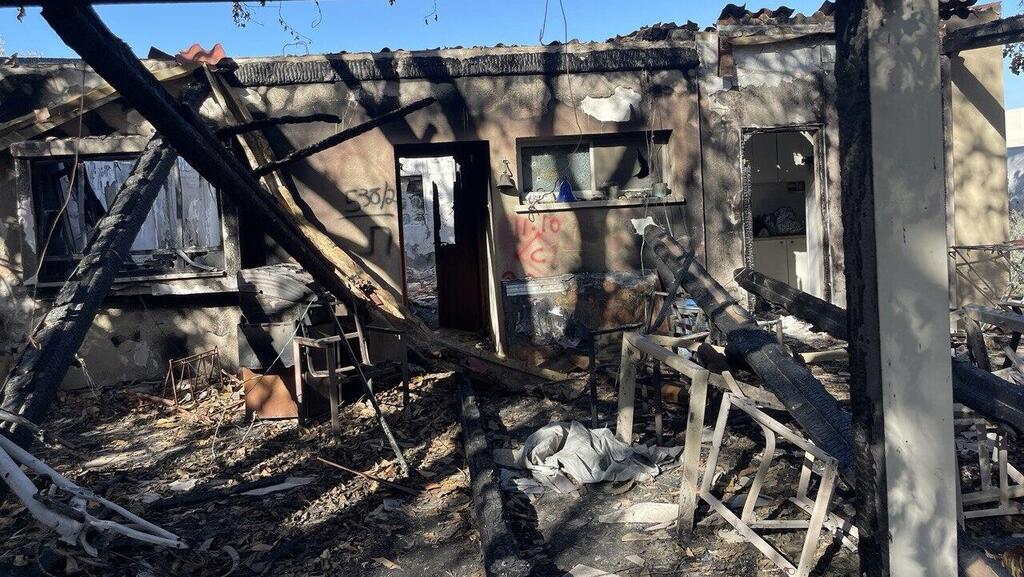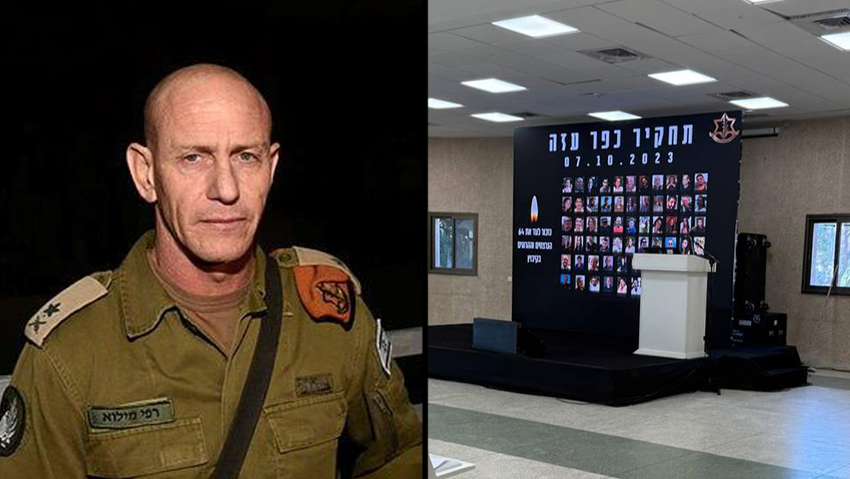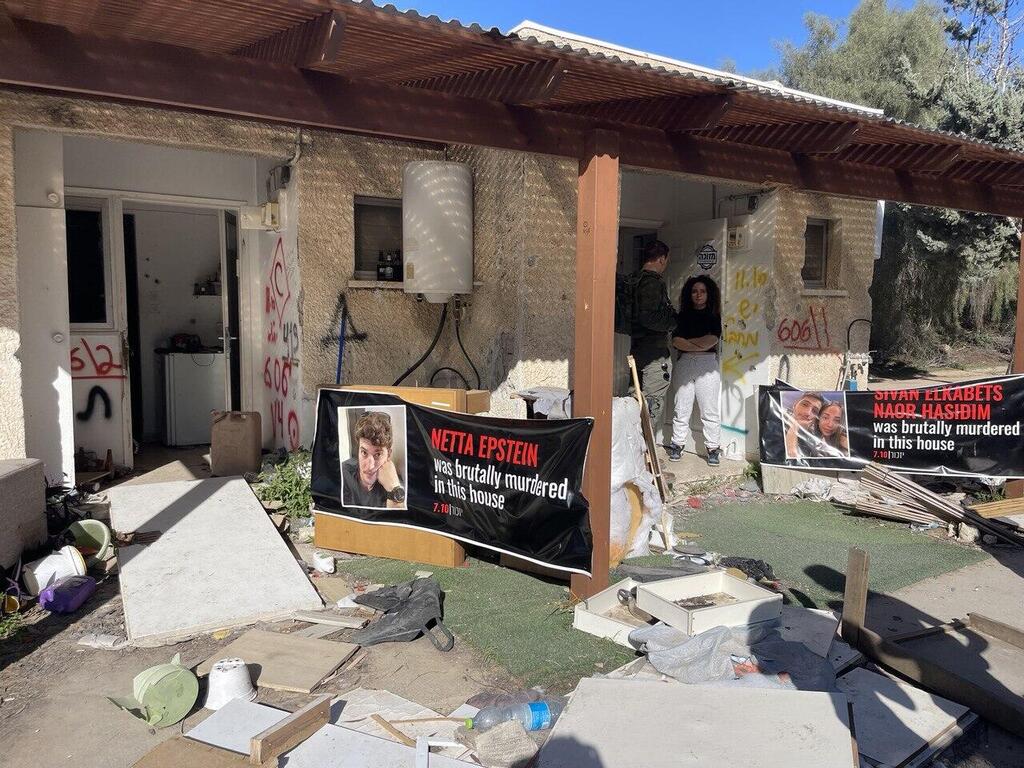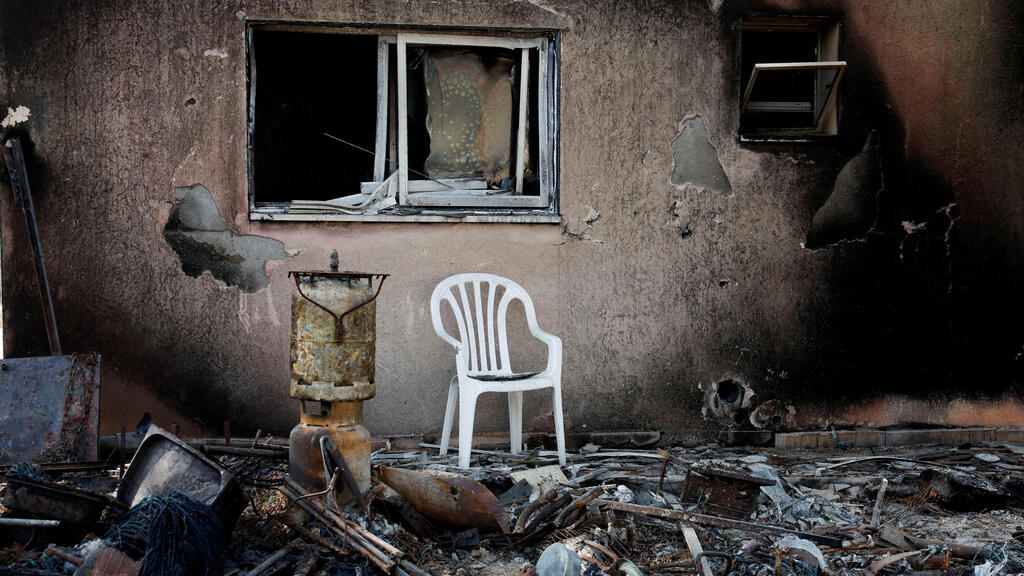An IDF investigation into the October 7 massacre in Kibbutz Kfar Aza was presented to the community on Wednesday. The kibbutz was overtaken by Hamas terrorists during the terror attack, resulting in the murder of 64 members and the abduction of 19 others. IDF representatives emphasized at the start of the briefing that the army failed to respond in time, taking hours to arrive at the kibbutz.
Brig. Gen. Rafi Milo, head of the Home Front Command, participated in the presentation. “There was a huge gap between how we perceived Hamas strategically and the reality. That was the concept,” he acknowledged. Hundreds of community members attended the briefing held at Kibbutz Ruhama in the Sha'ar HaNegev region, where Kfar Aza residents are temporarily housed. Among the attendees was hostage survivor Amit Soussana.
Kfar Aza officials issued a statement following the presentation, describing the IDF’s investigation as “shocking, difficult, and a further testament to the fact that Kibbutz Kfar Aza was overtaken on the cursed morning of October 7 by hundreds of terrorists, and its residents were abandoned. For hours, community members cried for help and fought almost alone, showing heroism and camaraderie against hundreds of murderers. The local defense team fought valiantly without any soldiers entering the kibbutz until late morning. Even when soldiers did arrive, it was without control or command."
The statement continued: “Sixty-four members of our community were murdered, 19 were abducted from their homes, and dozens of buildings were burned or severely damaged. This is an unimaginable failure of the IDF’s command and defense apparatus. The investigation is thorough, but to the critical question of where was the IDF — there is no real answer.”
The community emphasized that Israel has a moral obligation to bring home its members twin brothers Gali and Ziv Berman, and all the other hostages. It also called for ensuring that all security and physical conditions are met for the rehabilitation of Kfar Aza. “We will forever remember and honor the soldiers and security personnel who arrived, fought with determination, and sacrificed their lives for us,” according to a statement from the community.
Before the full investigation was presented, a general overview was given to the bereaved families from the kibbutz. Several of them, present at the meeting with Milo, shared that there was significant tension in the room and that the families left dissatisfied with the answers provided. “There was nothing in the investigation,” they said, “They said it was an ‘intelligence failure,’ which is all we've been hearing for a year and a half. There was nothing new. They didn’t focus on the data. They just apologized from start to finish.”
One bereaved family member added: “Grieving parents were in tears. He (Milo) took responsibility, which we don’t accept, claiming he regretted not going to fight that day. Why would he, as head of the Home Front Command, go fight? He said the main problem was that we became addicted to intelligence — and the intelligence said there were no irregularities.”
Another family criticized the investigation, claiming it described events “as if they were in an alternate world — and we weren’t there.”
Earlier this month, Ynet reported new revelations about the massacre. The IDF’s investigation, which will be published Thursday and has already been shared with communities in the Gaza border area, reveals a number of failures during the October 7 attack in Kfar Aza.
According to the investigation, in at least one instance, an IDF soldier mistakenly killed a civilian who had been abducted with his vehicle. The soldiers believed the individual was a terrorist and opened fire. The victim’s family was recently updated on the findings but had initially suspected friendly fire. The investigation outlines a series of failures, including delays in the forces’ arrival at the kibbutz and a failure to enter and engage Hamas terrorists, as the soldiers waited for further orders.
<< Get the Ynetnews app on your smartphone: Google Play: https://bit.ly/4eJ37pE | Apple App Store: https://bit.ly/3ZL7iNv >>
The investigation also revealed that, after some soldiers entered the kibbutz and cleared areas of Hamas fighters, they did not secure the area and left. It later emerged that terrorists returned to the kibbutz and continued their killing, abduction and destruction. Additionally, the evacuation of civilians, many of whom had gathered at the gas station outside the kibbutz, was not documented, which prevented forces from understanding who was still inside their homes and hindered further combat.
Another mistake in judgment was the decision to evacuate civilians to the gas station, which turned out to be a poor choice, as additional terrorists were present in the area. The soldiers assigned to protect civilians inside the station did not conduct external defense operations. The decision to evacuate kibbutz residents by bus on Route 232 toward the Sha'ar Hanegev Junction was also questioned, as the buses were unprotected and the area was still under attack. Fortunately, the buses were able to travel safely, despite the ongoing fighting.
The investigation also highlighted failures in handling the bodies of civilians, local defense team members, and security forces. The IDF and emergency services evacuated bodies to collection points in the kibbutz without documenting the location or circumstances of the deaths, which could have provided critical information for investigation and the victims’ families.
Despite these findings, the kibbutz emphasized that “the forces that did eventually enter fought like lions, some knowing they wouldn’t survive. IDF soldiers saved lives in Kfar Aza, and they rescued civilians from their homes despite everything.”






